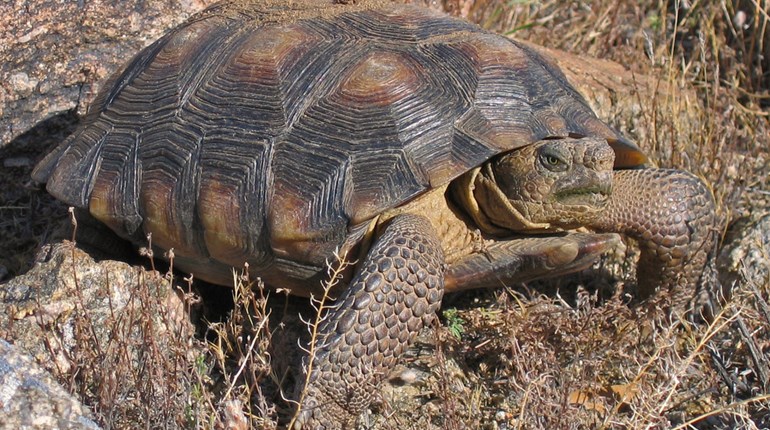
If you live in the American Southwest, now is a terrific time for tortoises. Much-needed monsoon rains bring out desert wildlife in Arizona. Animals may wander in search of mates, moisture, and as a necessity to escape flooding. But if you see one of these antediluvian beasts on the ... slow ... move, there are some things you should know. This advice comes to us via the Arizona Game and Fish Department (AZGFD), but it applies to all American desert tortoises.
There are two species of desert tortoises in Arizona: the threatened Mojave desert tortoise, found north and west of the Colorado River; and the Sonoran desert tortoise, which is protected by AZGFD. Here are some simple guidelines to help keep our population of desert tortoises vital.
Keep wild desert tortoises wild. Taking a wild desert tortoise home is illegal in Arizona. Additionally, most desert tortoises stay in the same small area their entire lives. If moved to a new location, the reptile will not know where to find food and shelter, and it likely will die. Interested in adopting? Visit https://wwwazgfd.com/wildlife-conservation/living-with-wildlife/.
Don’t release a captive desert tortoise into the wild. “We cannot stress enough how detrimental it is to let a captive tortoise go free in the wild,” said Chad Rubke, AZGFD’s turtles project coordinator. “Captive desert tortoises cannot be released into the wild, as they can pass diseases to wild populations and displace wild tortoises. It is also illegal to release captive desert tortoises into the wild.”
Keep dogs away from wild desert tortoises. Even the most gentle dog can pose a serious threat to a desert tortoise. Keeping dogs on leashes, or in fenced yards, is an effective way of reducing their encounters with desert tortoises.
See a desert tortoise? Let your state biologists know. Email the details (time, date, place) and a photo (if one can be taken without handling the desert tortoise), to [email protected] if you're an Arizona resident. (Please check for your local fish and game agency if you're not.) “A tortoise in the road is simply trying to get to the other side, and the best thing anyone can do is to leave it in the wild,” Rubke said.





































